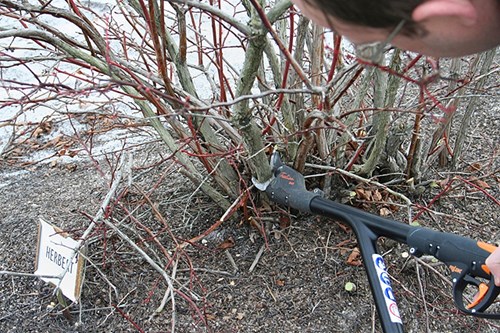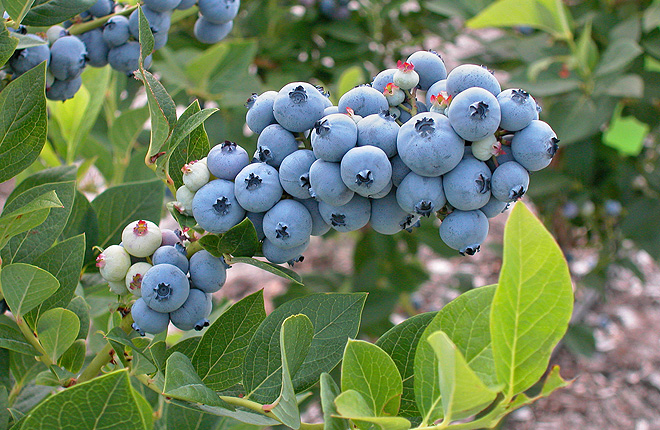Blueberry Bush Pruning Timing
New blueberry varieties developed for northern growing areas in the United States are often hybrids of northern-adapted and southern-adapted breeding material. Such hybrids may retain their leaves longer in the fall, and appear to be slow to enter dormancy.
Blueberry growers prune their bushes annually to remove old growth, rejuvenate the bushes, and balance fruit load.
Commercial growers in New Jersey often have to begin their annual pruning in late September, even before typical northern varieties have gone fully dormant. Thus, a concern regarding both northern types and newer cultivars containing southern germplasm is whether early-fall pruning stimulates growth and decreases cold hardiness, making overwintering flower buds more susceptible to winter damage. Northern blueberry growers needed to know whether early pruning would damage these new cultivars, thus reducing their fruit yield.
 ARS scientists found that early-fall pruning doesn’t affect blueberry cold hardiness. (Mark Ehlenfeldt, D3796-1) |
To address their concerns, Agricultural Research Service (ARS) plant geneticist Mark Ehlenfeldt conducted a study to determine if early-fall pruning of either northern highbush or southern highbush blueberries would harm their development of cold hardiness. Ehlenfeldt, from the Genetic Improvement of Fruits and Vegetables Laboratory in Beltsville, Maryland, is based in Chatsworth, New Jersey.
Ehlenfeldt subjected Jersey (northern highbush) and Legacy (southern highbush) blueberry plants to early and late pruning protocols and conducted a freeze-thaw study evaluating the damage to flower buds on detached shoots. The results, published in the May 2015 issue of HortScience, were encouraging.
“Across 2 years of study, no significant differences due to pruning time were observed, so growers can confidently continue early pruning of both northern-adapted cultivars and, more importantly, the newer hybrid cultivars without concern of affecting winter hardiness,” says Ehlenfeldt. “This information is important to growers and researchers for developing best management practices for new cultivars.”—By Sharon Durham, ARS Office of Communications.
Key Facts
- Annual pruning is an important part of blueberry management.
- New Jersey blueberry growers needed to know how early pruning affects new varieties.
- ARS researchers found early pruning doesn’t affect winter hardiness.
Full Story







